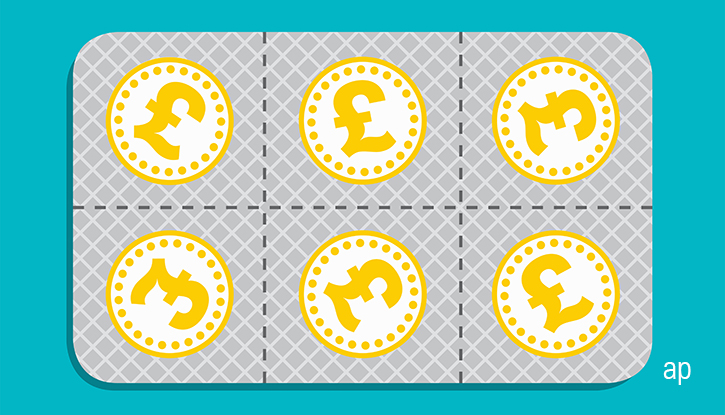
Some months are easier than others when it comes to analysing the best- and worst-performing funds. February was one of these, with gold and China funds dominating the laggards list and European funds the leaders.
Global investors remain in "risk on" mode but this is very regionally focused, with European (and UK) stocks outperforming. On the bull side, China’s economy has re-opened, the FTSE 100 briefly hit 8,000 points, and earnings season has been strong in certain sectors such as oil and banking.
Still, there are signs that 2023's roaring start may be losing momentum. Bets on central banks pivoting and inflation peaking this year look less sure than they did in January. And that’s affected commodity prices, especially gold. Europe remains at war, one year on.
Let’s start with February’s winners among the nearly 800 funds that Morningstar rates. Some 271 of these were in positive territory last month, with the best up 4.71% (Jupiter UK Special Situations) and the worst performing (BGF World Gold) down 10.96%.
Jupiter UK Special Situations is just ahead of the rest of the top 10 and is the only country-specific fund in the elite list, as well as the only Gold-rated fund. It returned 4.71% in February, making a 12.40% gain in the year so far.
While the fund has UK in the name, it has a 10% weighting towards Eurozone stocks, which have been on a winning streak of late. In his latest report, Morningstar fund analyst Teodor Dilov says: "Jupiter UK Special Situations features a highly experienced manager applying his approach in a disciplined and consistent fashion […].This is a compelling offering for investors looking for a value-biased UK equity strategy."
Top three holdings include BP (BP.) and Shell (SHEL), which released record results for 2022. Their share prices have made a strong start to the year, building on 2022’s gains, with BP up 15% this year and Shell 8%.
Other UK-focused funds in the top 10 include Silver-rated Schroder Recovery, which rose 4.25% in February. The fund "seeks to identify firms trading at significant discounts to their perceived fair values" says Morningstar analyst Daniel Haydon, who describes this as a "deep value" fund. Two banks, Standard Chartered (STAN) and Barclays (BARC) are in the number one and two slots of the portfolio. Italian energy giant Eni is number three.
Schroder European Recovery, which has a Morningstar Analyst Rating of Bronze, is also in the top 10 with a rise of 3.88% in February and 13.71% for the year to date. Six of the funds in the top 10 are Eurozone Large-Cap Equity and Europe ex-UK Equity. Index wise, the Euro Stoxx 50 is up nearly 10% in the year to date and is now above its pre-pandemic levels. The Morningstar Europe index is more than 8% higher so far this year
Apart from the Europe-focused funds, AQR Managed Futures stands out. It’s in the Systematic Trend category, which means it looks to profit from market movements. The Neutral-rated fund was up 4.05% in February, following a 22% gain in 2022, way above the index performance.
"The core of the strategy buys assets with prices that are trending up and shorts assets with prices that are trending down, resulting in a strategy that should produce gains in rising and falling markets," says analyst Simon Scott.
Two BlackRock precious metals funds – BGF World Gold and BlackRock Gold and General – are the number one and two worst performing funds in February. This follows a weakening in the gold price – which softened from $1,950 an ounce to just above $1,800 as investors toned down expectations of US rate cuts this year. (As an aside, commodity prices, which are priced in dollars, are sensitive to changes in US interest rates and the dollar. A weaker dollar makes commodities more attractive to buyers.)
China in the Doldrums
China and Hong Kong funds made up the rest of the bottom 10.
Emerging market managers were keen to put 2022 behind them and hoped for a better 2023. China’s re-opening after a few years of Covid restrictions seemed to be the turning point. A softening dollar – as traders backed the idea of the Federal Reserve being close to its peak hiking cycle – also helped. (Emerging markets tend to do well when the dollar is weaker and vice versa.)
Fund investors headed back into these products towards the end of 2022 and into 2023. But the performance hasn’t exactly followed suit: the Morningstar China index is flat so far this year and down nearly 14% in the last month in dollar terms. The index fell 21% in 2022 and by the same amount in 2021.
Active China funds make up eight of the bottom 10 funds in February – and that spilled over into the bottom 20, with a number of Asia funds seen there. Losses ranged from -6% to -9% for funds including Gold-rated Schroder China Opportunities and FSSA China Growth, and funds by UBS, JPM, Allianz and Fidelity.
My colleague Kate Lin has written about China’s uneven recovery in this recent article.
Morningstar India is 6% lower in the year to date too, having fallen around 8% in 2022.
Neutral-rated Jupiter India is the worst performing fund so far this year with a near 7% fall in 2023 and -3.44% in February. In the bottom 10 this year are a number of other active India funds, including GS India (rated Bronze), abdrn Indian Equity (Bronze), UTI Indian Dynamic Equity (Silver), Franklin India (Bronze) and Fidelity India Focus (Bronze).
But these funds had a strong run in 2022. Jupiter India gained 5.3% in 2022 in volatile global markets, beating its category and index, and that followed a bumper 35.9% in 2021.
The 2022 Context
Six of the top 10 performers in February made positive returns in 2022, while nine out of the 10 worst performers last month made negative returns in 2022. The year is only two months in so the 2023 performance tables may look very different by the end of the year.



























